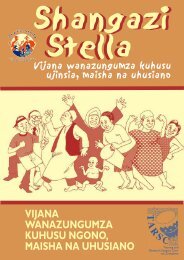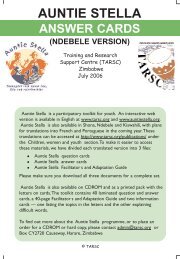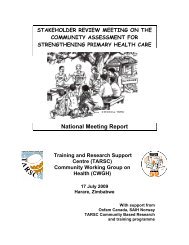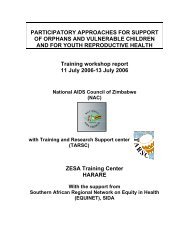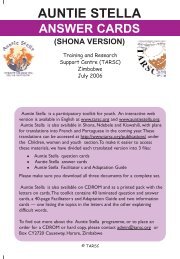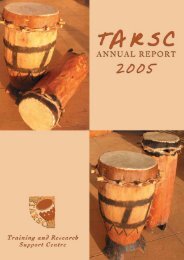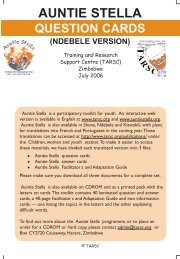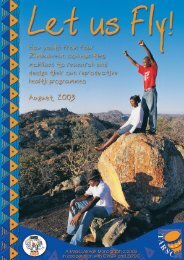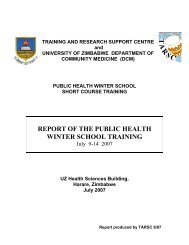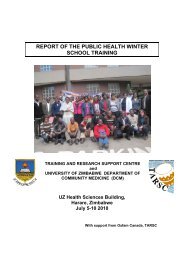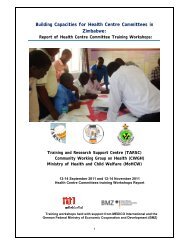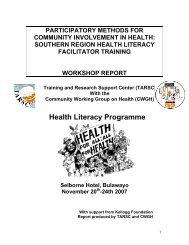BEAM rep final.pdf - Training and Research Support Centre
BEAM rep final.pdf - Training and Research Support Centre
BEAM rep final.pdf - Training and Research Support Centre
Create successful ePaper yourself
Turn your PDF publications into a flip-book with our unique Google optimized e-Paper software.
4. Findings<br />
The survey reached out to more than 100 school Head or other authorities (such as bursars <strong>and</strong><br />
accounts clerks), more than 200 beneficiaries. The table below gives a typological summary of<br />
the different types of beneficiaries for the different type of schools. A greater number of the<br />
schools <strong>and</strong> beneficiaries fall under the council schools as most rural schools are community<br />
schools that are jointly owned by the council <strong>and</strong> the communities. The survey included some<br />
estate schools (privately owned company schools) that are located in the Lowveld area to<br />
ascertain how they h<strong>and</strong>led <strong>BEAM</strong> funds. Most of the potential beneficiaries are orphans (a<br />
combined total of 11448, which is 75% of the total number of potential beneficiaries) followed by<br />
those whose bread winner was not gainfully employed <strong>and</strong> those whose households had been<br />
classified as extremely poor. As expected almost 100% of the beneficiaries were street kids<br />
were found in the urban areas, with one or two in the peri-urban. It is not clear which of the<br />
potential beneficiaries falling under the category of one deceased parent had father or mother<br />
deceased. Of these 15 243 potential beneficiaries in the schools’ registers, only 8533 (56%)<br />
were receiving <strong>BEAM</strong> assistance.<br />
Table 10: Number of potential <strong>BEAM</strong> beneficiary categories by type of school<br />
Type of<br />
School<br />
Orphane<br />
d both<br />
parents<br />
Orphaned<br />
one parent<br />
deceased<br />
Child under<br />
foster care<br />
Living on<br />
the street<br />
Bread<br />
winner<br />
not<br />
gainfully<br />
employed Disabled<br />
Household<br />
extremely<br />
poor<br />
Bread<br />
winner<br />
chronically<br />
ill<br />
Government 508 497 59 6 556 98 229 69<br />
Council 7986 1430 342 23 724 129 616 158<br />
Mission 330 146 81 0 47 19 362 32<br />
Estates 276 275 27 5 79 5 108 21<br />
Total 9100 2348 509 34 1406 251 1315 280<br />
Almost all potential <strong>BEAM</strong> beneficiaries in the resettlement areas <strong>and</strong> Estates area were<br />
receiving <strong>BEAM</strong> support.<br />
Table 12 overleaf shows that most of the beneficiaries were concentrated at council schools <strong>and</strong><br />
at the primary level in the acquired resettlement areas. Overall, only 12.6% of the total<br />
enrolment of the schools that participated in the survey received <strong>BEAM</strong> support.<br />
14



